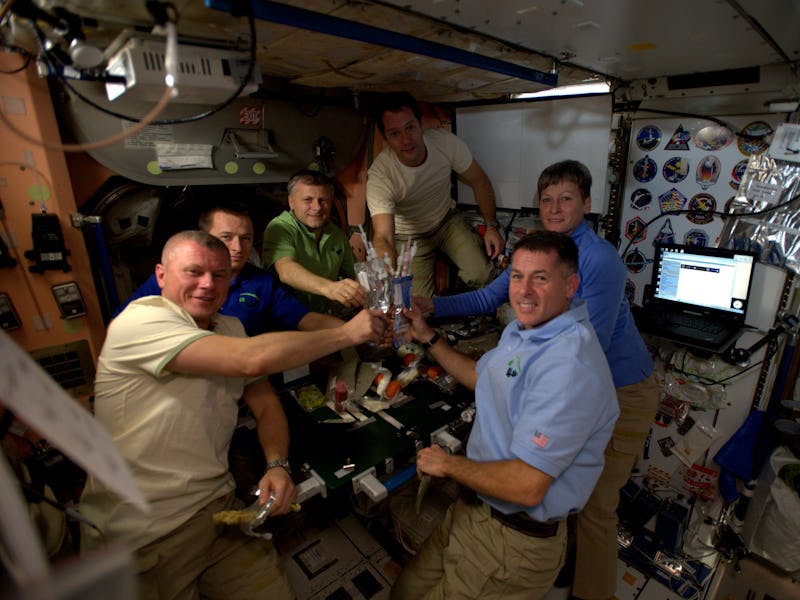NASA astronauts aboard the International Space Station luckily won’t have to wear old socks and underwear for an extended period after a cargo vessel carrying new clothing burned up Thursday, some 118 miles above Siberia.
Russian ground control lost contact with Roscosmos’ Progress spacecraft — which was packed with supplies, including clothing — seven minutes into its schlep to the ISS. The vehicle and all the contents onboard were presumably incinerated by Earth’s atmosphere.
Despite the loss, it’s important to note the space station crew will be fine. They’re well-stocked.
The uncrewed Progress MS-04 spacecraft was carrying 5,400 pounds in supplies:
- 1,400 pounds of propellant
- 112 pounds of oxygen
- 925 pounds of water
- 2,750 pounds of spare parts, astronaut supplies, and hardware for experiments.
The vessel was expected to arrive at the orbital outpost on Saturday. Russia’s space agency, Roscosmos, explained that “the loss of the cargo ship will not affect the normal operation of the ISS systems.”
NASA reported that “all six crew members living aboard the space station are safe and have been informed of the mission’s status.” Both the U.S. and Russian segments of the station are expected to operate normally and each segment is stocked with a sufficient amount of supplies.
According to NASA, the U.S. supplies on board the resupply vehicle included spare parts for the station’s environmental control and life support system, research hardware, crew supplies, and crew clothing — all of which can all be replaced.
The ISS typically has at least a six-month supply on hand for a crew of six people. As each new vehicle goes up, more supplies are added to the reserves.
The incident marks the fourth failed resupply mission in 25 months. So while the station is supplied, its reserves are still recovering. The losses have also affected the timetable for many different ongoing experiments taking advantage of the microgravity environment.
When asked about personal items, such as Christmas presents for the crew (or special treats like coffee), NASA assured Inverse that those items were most likely not on board. However, the lost cargo did include a new Russian Orlan spacesuit, as well as supplies for the station’s environmental control and water recycling systems. Still, all of these are replaceable, and will be in the near future.
Clothing is typically flown in advance of a crew member actually arriving, so by the time a crew member arrives, their supply of clothing is there waiting.
A NASA rep tells Inverse that how often a crew member will recycle an outfit is up to each individual. All dirty clothes are discarded along with other trash on departing cargo craft — such as Orbital ATK’s Cygnus spacecraft.
There are no laundry facilities on the ISS, so fresh clothes are a luxury and are sent up on supply missions like this one. Since there are only a handful of resupply missions a year, astronauts usually have to wear their clothes longer than they would on Earth. (Astronauts quickly lose their sense of smell in space, so they can’t really tell when others are in desperate need of a hot shower.)
A crew of six astronauts typically go through 900 pounds of clothing each year. Astronaut Don Pettit blogged about his time in space, writing that he changed his underwear once every three or four days on the ISS, and that he had worn the same pair of shorts for months.
Former astronaut Chris Hadfield appeared on Conan O’Brien in 2013 to discuss his time in space. When asked about laundry in space, Hadfield jokingly explained to the host that the specks of dust we see in sunbeams might actually be an astronaut’s dirty underwear raining down on you.
So the next time you wish upon a shooting star, bear in mind you might be hitching your dreams to what was once snugly covering an astronaut’s bum.
